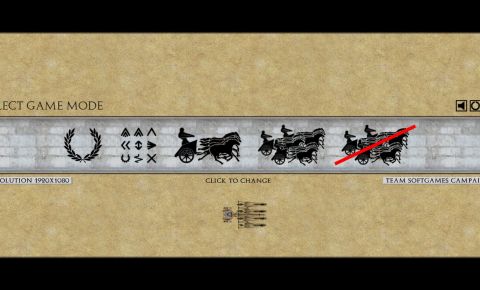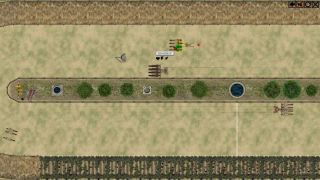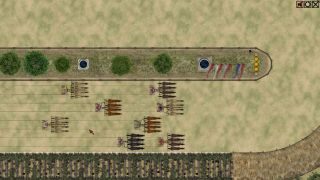During my first chariot race in Qvadriga, I managed to whip my horses hard enough that one of them decided to expire on the track rather than reach the finish, which of course meant that I was unable to win that particular contest.
In my second event, I chose to accelerate constantly from the start without worrying that my opponents were faster initially after they used their own whips and I managed to get in the lead by the end of the second turn, before my chariot disintegrated under me and my auriga (that’s a fancy name for driver) was run down by my opponents.
A string of other failures followed as I evaluated exactly how hard I could push the charioteers and their equipment, but after a number of losses, I finally managed to win my first full race and, as I watched the Denarii fill my purse, all I could think of was that I had no real recollection of how I managed to do that.
Qvadriga seems like a rather simple game at first, but the creation from developer Turntopia and publisher Matrix Games is one of the most interesting small games I have encountered in the past few years, because of both its unique theme and its simple but deep core mechanics.
The title takes the player back to the Roman period of the Ancient world in order to cast them as the leader of a team that competes in chariot races, controlling both the pre-race preparation, which involves equipment, auriga and horses, and the actual competition between the Formula 1 cars of Antiquity.
The player can choose one of six factions, each with their own advantages, and must then choose one of the regions of the world to start competing in, needing to prove his skill in some backwater towns before he earns enough fame to travel the world and impress other spectators and competitors.
The campaign in Qvadriga will eventually take him to the Circus Maximus, the most important arena in the Roman Empire, and a special Epic option also challenges him to have the best charioteer in the land.
The development team has done a great job of making sure that there’s both history and flavor linked to the cities that are visited and the various aspects of the sport, even if the narrative of the game is relatively limited.
The actual races use a turn-based structure (the dynamic option requires some experience before it can be used) and ask the player to decide exactly what move he wants his chariot to perform in the coming period of the race.
Turntopia has done a great job of creating an intuitive way to show commands, via symbols arranged in three lanes depending on where they can be used, and gamers will need to initially experiment a little before they know intuitively what they need to do at certain times.
There are two core designs for tracks in the title and on both, the player needs to try and get top speed on the straights while also ensuring that he has the stability to get through corners without crashing out.
As Qvadriga progresses, the enemy drivers also become more aggressive and gamers need to defend themselves from their whips and their attempts to crash literally.
The races can seem a little slow at times, but as chariots crash out and the speed increases, they become nail biting affairs where I lost minutes thinking whether I wanted more speed or a better position for the coming corner.
As the Denarii come in, the player can upgrade his auriga, horses and chariots, while also paying maintenance costs as he travels the Empire and takes on ever improving opponents.
A run to the Circus Maximus involved creating a star auriga for one’s own team while trying to take out the best of the other teams in smaller events, which is devious and entirely appropriate for the era.
Qvadriga can be a punishing experience, as the Game Over screen repeatedly told me, and I found that the best way to approach it, at least initially, is to take less risk than seems necessary, basically allowing the computer-controlled opponents to destroy themselves rather than risk the safety of your own assets.
The graphics of Qvadriga are not its strong point, but the development team has managed to capture the essence of the sport it is portraying and, more importantly, to create a simple and quick way to see the state of a chariot and give it commands.
Qvadriga is certainly a niche experience, targeting as it does those who love chariot races and turn-based experiences, but it is certainly a game worth playing for its well-developed mechanics and the way it forces gamers to balance risk and reward in order to win.
 14 DAY TRIAL //
14 DAY TRIAL // 



























